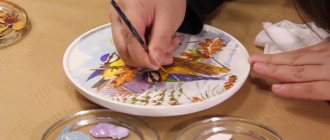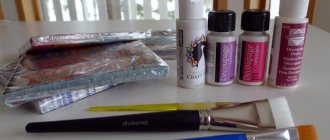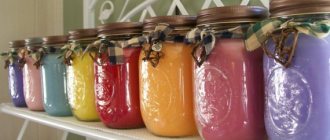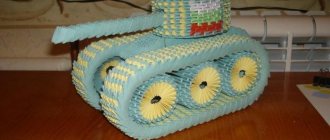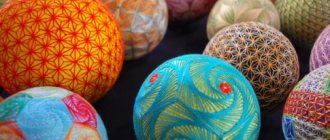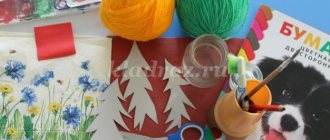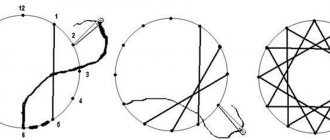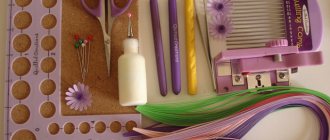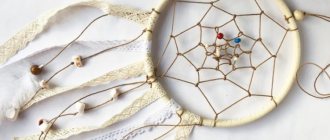Decor
12/27/201602/25/2017 Olga Bilovitskaya
Today, decoupage boxes are very popular among connoisseurs of beauty. And this is not surprising. With the help of such art, you can express your creative abilities, and as a result, acquire a valuable and exclusive item. What is decoupage? This is a unique technique that allows you to apply a design to a variety of surfaces. Not only a box, but also a book and other objects can be used as a working material. Today we'll look at how to transform an old jewelry box.
Necessary tools and materials (MK)
To apply an image to a product, you must have the following materials:
- special napkins for decoupage;
- sandpaper;
- decoupage glue;
- wax candle;
- tape and various elements for decoration;
- screwdriver.
The exact list of tools and materials depends on what technique will be used to apply the design. It is worth considering that before decorating it is necessary to prepare the surface. Below we offer a detailed master class on decorating a box with your own hands in decoupage style.
Step-by-step instructions for beginners
Before you begin master classes on decoupage boxes, you need to understand the essence of its implementation. This will help beginners to master the technology of such decoration at the initial stage. First of all, you need to prepare tools and materials, namely:
Decoupage box. For beginning craftsmen, it is best to take a ready-made wooden blank (such a product can be purchased at handicraft stores).- You also need to get decoupage cards or napkins, which are sold at retail outlets specializing in hobby goods. In general, any type of paper with a pattern is suitable for the technique (regular table napkins, wallpaper, postcards, clippings from literature, etc.), but for a beginner it is still better to use special blanks.
- Sharp scissors for cutting out pictures.
- Brushes of different sizes for glue and varnish.
- Glue (regular PVA or for decoupage).
- Glossy or matte high-quality acrylic varnish (the durability of the product depends on the quality of the varnish).
- Acrylic primer.
- Sandpaper.
As auxiliary tools you may need: an old toothbrush, tape, foam sponge, finishing putty, wax candle, various decorative elements.
Surface preparation
In order for the decoupage to turn out neat, the surface of the object being decorated must be perfectly smooth, so it must be properly prepared. This is done in several stages:
- Using sandpaper, you need to carefully sand the workpiece. This will help remove paint or varnish from the old product, as well as remove minor scratches and other defects.
- If the surface has very deep cracks or chips, they are first puttied, then the putty is allowed to dry for 3 to 5 hours, and then sanded again to a smooth state.
- Dust and debris remaining on the object after such treatment must be carefully removed, and then degrease the surface with acetone or an alcohol solution.
- After the workpiece is completely dry, an acrylic primer is applied.
- 30-40 minutes after the primer has dried, you can begin decoupage.
Paper thinning
The thinner the paper with the image, the more effective the decoupage will be. Thinning the material is one of the important stages of the technique, so it must be treated with special attention, otherwise the design will look sloppy or completely deteriorate. For this reason, beginners are recommended to use special decoupage cards on rice paper, which do not require prior preparation. In other cases, the paper is thinned using one of the following methods:
- Using tape. Varnish is applied to the front side of the picture in several layers, and after it dries, tape is glued to the back side of the picture. The adhesive tape is carefully peeled off along with the excess layers of paper. The procedure can be repeated several times until the picture becomes almost transparent.
- Softening in water. As in the previous method, the outer side of the image is treated with varnish, then the picture is lowered into a container with warm water for several minutes. The time it takes for the paper to soak depends on its density. The soaked drawing is carefully removed from the water and placed face down on a stationery file. Next, remove excess layers of paper, rolling them from the wrong side using careful finger movements. As a result, only a thin layer with a pattern should remain.
Decoupage technique
Having all the necessary materials and tools, you can proceed directly to creative activity. It is worth noting that wood is considered the best option for decoupage. If desired, a book or plastic product can be used.
Stages of decoupage of a wooden box:
1. First you need to prepare the surface of the box. If we are talking about something made of wood, then the base should be carefully treated with sandpaper. High-quality surface preparation will be the key to successful decoration of the box. This is especially true for older products.
2. If the item has metal decorative elements, it is better to remove them for a while. This issue can be resolved using a screwdriver or other available tools. Once the surface is prepared, you can begin tinting it. Here we are talking about painting it completely with acrylic paints.
Related article: Making a wedding album: master class (+50 photos)
3. At this stage, the selected pattern is transferred to the surface. Ready-made drawings can be purchased in special stores. The part with the image on it is carefully separated from the napkin.
4. Elements of the design are carefully applied to the prepared surface. Selected areas on the product are treated with decoupage glue. After this, you will need to wait until the glue is completely dry.
5. At this stage, the item is varnished several times. When the surface is completely dry, you can begin direct decoration. To begin with, the previous decorative elements are fixed in place. At the same time, they take into account the style in which the product itself will be designed. In some cases, a rational solution would be to change or completely remove certain decorative elements.
You need to consider the style in which the product itself will be designed. Decoupage of a wooden box involves decorating it, including changing all decorative elements and fittings.
On video: Decoupage of a box with antique scuffs
Decoupage in different styles
Decoupage for beginners is a creative activity. Even using the instructions does not deprive the product of its originality. After this technique, the box or book will become original of its kind. Before you begin converting a product, it is worth considering all available options.
Design can be done in different styles:
- vintage;
- Provence;
- shabby chic.
vintage style decoupage . With the help of certain tricks, the box can be somewhat aged. To achieve maximum effect, experts recommend using the craquelure technique. The aging effect is created using paint, which is applied directly to the prepared surface. To begin with, dark paints are used, and lighter colors are applied on top of them.
Decoupage boxes in vintage style
Stages of decoupage in vintage style:
1. The first layer can be applied with brown paint, then wait for the surface to dry.
Related article: Creative refrigerator using decoupage technique
2. Next, they begin to create the worn effect. To do this, apply a small amount of wax to the edges of the product. This will make the second coat of paint look somewhat worn.
2. A second layer of paint is applied, only in a lighter shade. The best option is white, light gray and beige.
3. When the paint has dried, lightly sand the areas with sandpaper. Processing is carried out until the bottom layer of paint comes out.
3. At the final stage, the product is decorated. The best option here would be retro pictures, roses and other patterns. The craquelure technique is also often used for decoration. This box made using decoupage technique will become an original decoration for any room interior.
No less popular is decoupage in Provence . The work is performed in the same sequence. Of course, there are some peculiarities here. Flower designs or rustic motifs are used for decoration. It is rational to use paint in bed shades. The aging effect is also appropriate here. Using the craquelure technique, you can create the appearance of cracking of the design.
Decoupage boxes in Provence style
Provence style is ideal for transforming a round box.
A box in the shabby chic is decorated almost the same as in previous techniques. Characteristic features are bed colors, old pictures, images of flowers, twigs and other “delicate” details. Shabby chic is used to decorate various items, regardless of their shape and size. This is especially true for products made in the form of a book.
Decoupage using the shabby chic technique and using printouts (2 videos)
Interesting ideas for decoupage boxes (41 photos)
The best posts
- Is it possible to glue wallpaper onto wallpaper: how to glue non-woven wallpaper, will wallpaper stick to paintable wallpaper, water-based paint, vinyl, liquid, video
- What should be the dimensions of window openings according to GOST
- Finishing the floor on the loggia and balcony
- Quick-drying, odorless paint for the floor of your country house
- DIY kites for children: drawings with diagrams and photos
- Stylish and fashionable: interior like Zverev’s [house review
- Types of hinges for cabinet doors and their installation
- Silk: types, properties, fabric care
Related article: Original do-it-yourself photo frames (+50 photos)
Master class decoupage and other techniques for making boxes.
Hello, creative enthusiasts! My name is Angelica, and today I opened my store in YAM. For myself, I chose the pseudonym Lila Abil Krivi (Lila Abil Krivi), for some reason it seems to me that a creative person is cramped within the framework of his own name given at birth, and he simply needs something extraordinary)))))).
People don’t go to visit empty-handed and don’t open stores)))), so I’m with the Master Class.
Let's try to make a box. In my store it’s called “In the Padishah’s Garden.” So, go ahead!
1.Print the picture you like on a laser color or inkjet printer with baked ink (I use Epson), print it on photo paper (I use Lomod 150), let it dry for about 3-6 hours (depending on the type of printer), cover it with 2-3 layers acrylic varnish. We apply each layer of varnish perpendicular to the previous one, without waiting for the previous layer to dry, this will allow the layers to adhere well to each other. Next, we dry our picture.
2. While the picture is drying, unscrew the hinges, disassemble the box, remove any unevenness, chips, or cracks. Wood putty is an indispensable assistant here. We sand, removing excess putty.
3. If you have a light picture, then it is better to cover the lid of the box with white paint or just white primer, then the picture will retain its brightness and will not seem faded. But my picture is a little dark, so I skipped this step.
4. Immerse the print in warm water for 10 minutes, take it out, place it face up, separate the layers of photo paper by picking it up by the corner of the top layer with a needle. This will be the same varnish layer with the picture that we need to stick on the lid of the box. We carefully pull it, separating it from the rest, trying to ensure that the part to be separated is perpendicular to the table, so the picture is less likely to tear. Glue it onto the lid of the box.
5. Be sure to expel all air bubbles and smooth out wrinkles! Otherwise, the picture will rear up - and goodbye, beauty... You can use a roller for these purposes or a universal remedy - your own sensitive fingers)))), this is exactly what I do. You can speed up the drying process with a hairdryer.
6. Next, we apply structural paste or wood putty to those places where the pages should be, whoever has what is available. We are looking for something that will help us imitate the pages of a book. You can do this with a toothpick or a wooden kebab skewer, but it takes a long time, and I decided: I’ll be creative! I found an old comb, measured the desired length, and voila! That's how it was
And this is how it happened:
7. We make an imitation of embossed metal loops. Stencil, paste, palette knife.
Apply the paste in three steps to avoid shifting the stencil: dry on top, dry on bottom, dry in the middle.
Masking tape works very well here.
Well, here is a very important tool in action: a kebab stick. It is very convenient for removing excess paste, putty, etc. Next you will see that the tool is really important))))
It is not necessary to remove irregularities on the loop itself; they will help create the illusion that these are embossing irregularities.
8. Now the paints come into play. First, let's color the pages of our book. Mix white, ocher and burnt umber. We try to get the color to look like the pages of the book have darkened over time. Like that:
It is better to use a coarse bristle brush; it gives good grooves and creates the desired texture. Hairdryer, dry.
9. Next, we’ll figure out how we’ll decorate our book. I wanted to scatter jewelry around the perimeter))).
We draw with a simple pencil, correct it, and draw again. Then we put the structural paste (or putty with PVA) into a small container (from the same PVA glue) and, carefully squeezing it out of the tube, draw patterns. Remove the excess with a skewer.
Here, too, there is no need to achieve perfect evenness and smoothness, the box is a la antique, and therefore any unevenness looks appropriate. Let it dry thoroughly.
10. Then we need to paint the box in the color you have in mind. Mine is black. We paint and watch closely. If you don’t pay attention, then these things can significantly spoil the appearance of a “very expensive” item:
It is better to look at such places from different angles and, having noticed them, touch them up with a thin brush.
11.After the paint has dried, cover the work with 1-2 layers of parquet varnish. I have it inexpensively, I use it for intermediate varnishing. Firstly, this will protect the work from possible errors during further drawing. If something doesn’t work out, your hand is in the wrong direction, there’s a lot of paint, etc., all this can be easily removed from the varnish coating with a damp cloth. And secondly, varnish saves the amount of paint used for decoration and prevents it from being absorbed into the wood.
12. Well, then - gold. I painted the loops with a brush, and carefully touched the raised areas with a sponge. After the hinges and pages of the book have dried, we cover them with bitumen; this will give depth and age the places that require it. As a replacement for bitumen, you can use antique medium, patina, or simply mix acrylic: burnt umber with black and dilute with water to the consistency of low-fat cream. We remove the excess with a cloth.
13. Now comes the fun part! Creation of precious and not so precious)))) stones. I recently purchased Prisma paints as an experiment. Why not try them? It turned out to be more than exciting! Just meditative, I would say. They mix with each other, creating unusual combinations and color transitions.
I used the same skewer (remember, I said that this is an indispensable universal tool?). I dip it in paint and transfer it to the box. With another skewer I take another paint and mix it, helping the paint flow into one another.
The color combinations can be any, everything will turn out beautifully, the colors are simply magical.
The only negative is that they take a long time to dry; the manufacturer specified a time of 72 hours. I honestly waited)))), although it seemed to me that after a day I could continue working.
14. The next component in creating jewelry is epoxy resin. No, not the one sold in hardware stores, but the one used to create jewelry. Follow the instructions, mix, pour, mix again. And, using a skewer, we transfer the resin, creating the effect of a convex stone. By the way, the epoxy resin I have holds its shape very well and does not spread, even if there are no restrictions in the form of a structural paste. But this is also a minus, and this overseas young lady takes a long time to dry - 72 hours. 3D gel can be used as a substitute. But, in my opinion, it is not very hard after drying. I can’t say with certainty, because I haven’t used it myself.
15. Next, we arm ourselves with a non-baked outline for glass and ceramics, I have metallic gold, and draw dots and dashes, imitating embossed inserts. This is how it happened:
16. And again gold, this time let’s lightly brush across the pages, add gold to all the bulges and bulges, we have an expensive thing!? Let's not be shy!
17. It's time for the final varnish coating. I use Ferario varnish; products coated with this varnish are so nice to hold in your hands! If you don’t have such a varnish in your arsenal, it doesn’t matter, you can get by with another, less expensive option, but you’ll have to work with sandpaper)). Let the work dry for about 10-12 hours.
18.Now let's work on the inside. It seemed to me that there would be some kind of fabric inside. Of course, you can also paint it, but it still won’t be the same...
So, we take paper of a suitable size, apply it to each side of the box and separately (this is important!), draw each wall on the paper. Why do we do this? Because our workpiece is not perfectly flat, and a difference of 1-2 mm will be very noticeable if we cut the lining incorrectly. It is important that all the cut parts fit end to end, forming a smooth surface without gaps. We pin the paper patterns of the sides onto the selected fabric and cut out the details. I do it as follows: cut out one part, glue it, then another, glue it, etc. It is better to glue the crystal with Moment glue in the following order: walls, then bottom.
19. And now is the most exciting moment, we collect our precious, unique box, admire and rejoice together!
